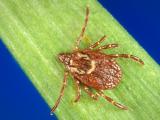Dec 11, 2006 (CIDRAP News) Soon after the terrorist attacks of 2001, Congress approved emergency funds to teach hospital staffs how to recognize and respond to bioterrorism attacks, and today the US Centers for Disease Control and Prevention (CDC) released its first report on those efforts.
The information in the report, published today in a CDC bulletin, came from 2003 and 2004 supplements to the annual National Hospital Ambulatory Medical Care Surveys conducted by the CDC's National Center for Health Statistics. The survey was designed to assess terrorism preparedness training and identify training differences related to hospital characteristics.
"Information about the strengths and limitations of terrorism preparedness in US hospitals is crucial in planning how future funding could be used to improve the domestic defensive posture," the report states.
Of 874 hospitals included in the survey, 739 (84.6%) responded.
The survey revealed that teaching hospitals were better trained for handling bioterrorism than other types of hospitals were. Hospitals accredited by the Joint Commission on Accreditation of Healthcare Organizations were well ahead of other hospitals in training the following employees about terrorism response: nurses, staff physicians, laboratory employees, nurse practitioners, physicians, and residents. However, only 9.5% of the hospitals in the survey were not accredited.
Eighty-eight percent of the hospitals said their nurses had been trained in recognizing and treating patients exposed to at least one of seven diseases potentially associated with bioterrorism (smallpox, anthrax, plague, botulism, tularemia, viral encephalitis, and hemorrhagic fevers) or to chemical or radiological attacks.
In hospitals that had 24-hour emergency departments or outpatient clinics, 86% of clinical staff members were trained to recognize and treat smallpox, and 82% were trained to recognize and treat anthrax infections.
One unexpected finding was that staff physicians were far more likely than residents to have received training (75.1% versus 39.3%), a gap that was wider in nonteaching hospitals than in teaching hospitals.
"The original assumption was that physicians in the midst of their specialty education would be more likely to have received training in the current medical issues," the authors wrote. Though they noted the residents may have received preparedness training at their home teaching hospital, they said more efforts are needed to implement recommended bioterrorism content into medical school curricula.
The survey showed that more than three quarters of hospitals had taught their key personnel how to implement a "Hospital Emergency Incident Command" system or similar program. But the authors voiced concern that a quarter of the nation's hospitals are unprepared for a "chaotic event."
"This study presents baseline data for terrorism preparedness training, with respect to various hospital characteristics, to help inform emergency physicians and other healthcare professionals for future planning efforts," the report says.
The survey also included questions about other preparedness variables such as emergency response plans, surge capacity, equipment, and collaboration with outside organizations. Officials said future bulletins will detail those findings.
Niska RW, Curt CW. Training for terrorism-related conditions in hospitals: United States, 2003-04. Advance data from vital and health statistics, no 380. Hyattsville, Md., National Center for Health Statistics, 2006 [Full text]
See also:
Dec 11 CDC press release on hospital training for terrorist attacks
http://www.cdc.gov/nchs/pressroom/06facts/terrorism2003-04.htm


















